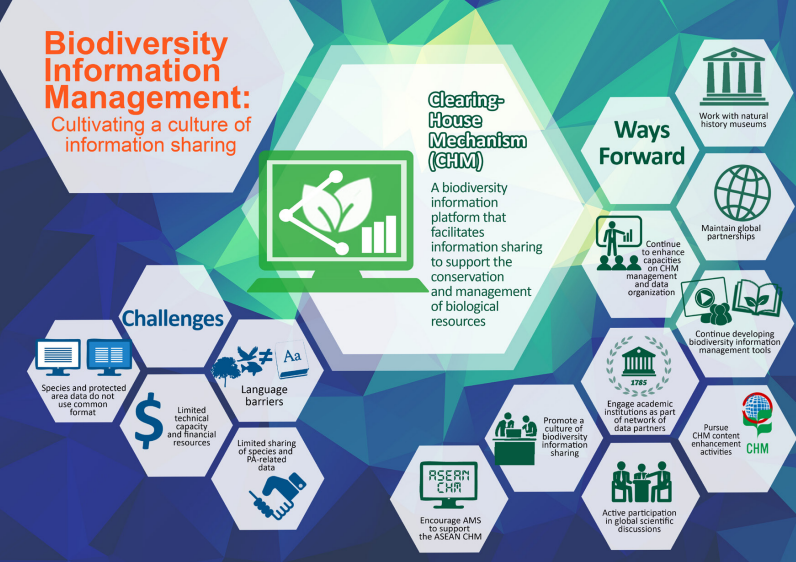
Biodiversity information can come in many forms, one of which is the observation of species—their habitats, genetic makeup and distribution, and the means by which this information has been collected. Biodiversity managers and decision makers who promote conservation of biodiversity resources need information on the state of such species, threats to their existence, the state of their preferred environments, and how these can be best conserved.
The use of biodiversity information as scientific basis for conservation planning and management is underscored in Target 19 of the Convention on Biological Diversity’s (CBD) Strategic Plan for Biodiversity 2011–2020. Thus, its collection and generation should be improved, widely shared, and appropriately used to achieve desired goals. The CBD encourages the establishment of a clearing-house mechanism (CHM) to serve as platform for technical cooperation and sharing of biodiversity information among member countries.
In the ASEAN region, Biodiversity Information Management (BIM) is the means by which ASEAN Member States (AMS) could systematically integrate biodiversity concerns in conservation planning, management, policy development, and decision-making processes. Specifically, BIM is having data contributed by a community of partners who are equipped with the necessary skills that enable the use of a common structure (interoperable data) and collaboratively develop knowledge products on responsible biodiversity conservation.
